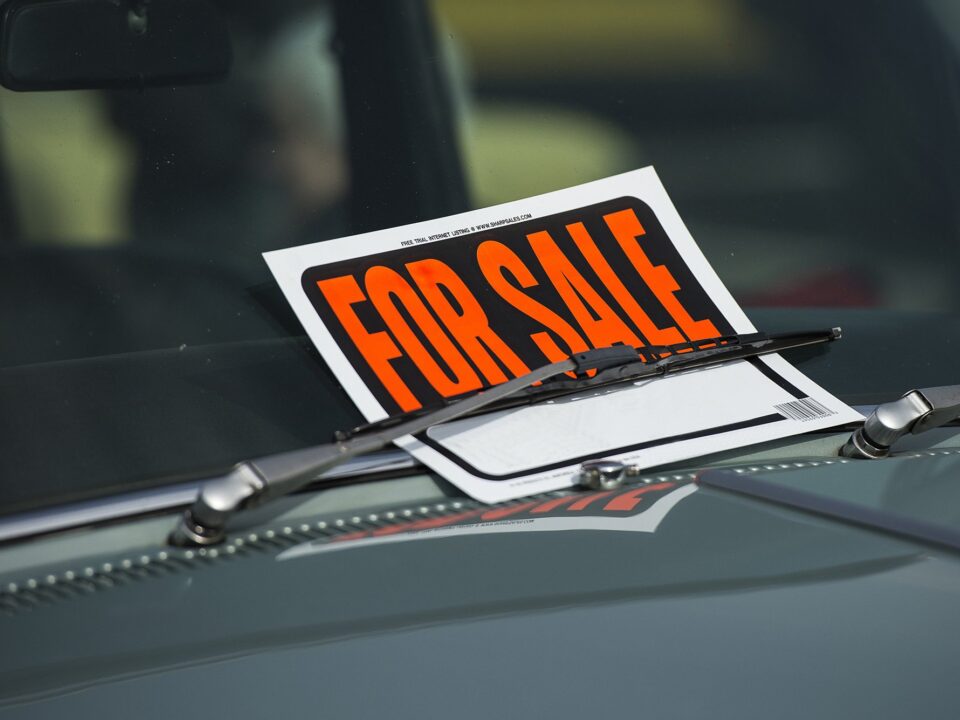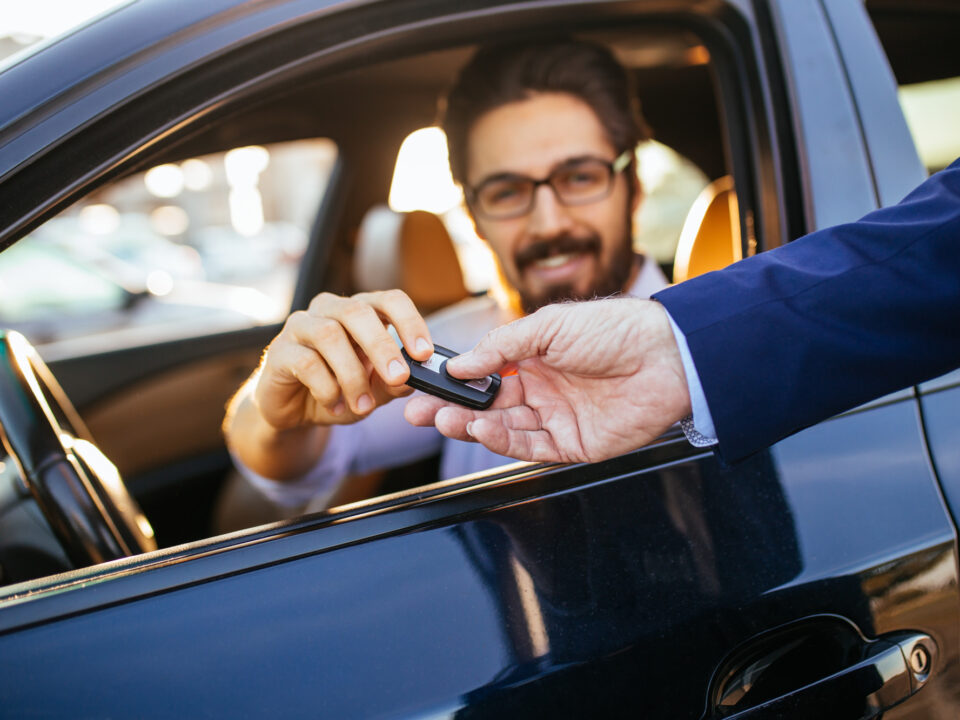
How to Estimate the Value of Your Used Car
August 23, 2023There’s never been a better time to sell a used car. Why? Because you can often get a better price for it than selling a new one.
Unless you’ve done this before, though, the process can seem daunting – even from the comfort of your home. There are documents to gather, interested buyers to speak with, and paperwork to sign. If you’ve asked yourself, “what are the steps to sell my car?” then you’ve come to the right place.
In this guide, we take a look at all the essential steps when you sell your car from home.
Steps to Sell My Car From Home
Back in the day, you would need classified ad listings, paper posters, or word of mouth to sell a car. There was a lot of work that went into it, even if your car was desirable and in good condition. These days, you can do virtually every part of the process without leaving your home.
That said, just because there’s more convenience doesn’t mean you can finish it in 5 minutes. Taking the time with each step ensures you find quality buyers and sell for a good price.
There are plenty of scams out there, both for sellers and for buyers. Use common sense and good judgment to avoid falling victim of sketchy deals and questionable people.
Selling your vehicle online will take the following steps:
- Choosing an online platform
- Determining your car’s value
- Fixing up your car
- Cleaning your car
- Getting pictures of your car
- Obtaining documentation
- Dealing with interested buyers
- Negotiating on the price
- Providing payment options
- Finalizing the deal
Let’s go into greater detail with all of these steps. We’ll provide some car sales tips and pointers along the way.
1. Choosing an Online Platform to Sell My Car
The landscape for selling a car online is robust and diverse. There are so many different options to choose from, all of them with unique strengths and weaknesses. You won’t have any trouble finding a platform that works best for you.
Instant Cash for Cars Offer
The easiest option on this list, which requires none of the following steps, is to get cash for your car in Los Angeles. All you have to do is provide details about your vehicle. You get an instant, fair quote from a reputable car-buying company.
This way, you can simply vet the business for yourself through Google. You have legal recourse if they break their contractual agreement or cause you any trouble. You can read their testimonials to see what the experience has been like for other buyers.
You won’t find any other way to sell your car faster than this option.
Online Classified Ads
Classified ads never went away, per se; they just moved to a new online location. They function more or less the same as their older counterparts. You post an advertisement to a local online community and communicate directly with interested buyers.
Popular classified ad websites include sites like Facebook Marketplace, Craigslist classifieds, and local online forums.
The benefit of classified ads is that they usually focus on your local community. These could be people you know or at least people who live in your neighborhood. If any issues arise, you know that you can deal with them with local authorities.
That’s sad; the main disadvantage is that classified ads have few protections for buyers. If someone scams you, your only recourse will be the police. The platform will do nothing to compensate you or penalize the buyer.
We recommend using Facebook Marketplace if you choose this option, as it allows you to see the public-facing profile of the buyer. You can do some social network sleuthing in advance to determine if they are trustworthy. However, know that Facebook Marketplace is still rife with scams.
Verified Car-Selling Platforms
The last option on the list is to use known car-selling platforms. These are the ones you’ve heard of: KBB (Kelley Blue Book), Autotrader private seller exchange, and so on.
These are a better alternative to online classified ads. The platforms provide strong protections against scams and fraud. They require in-depth documentation about all vehicles before making a sale.
The downside, though, is the costs associated with posting. The price of these improved protections doesn’t come free, like classified ad options.
Can I Sell My Car Back to the Dealership?
Yes, some dealerships will allow you to sell your car back to them. Do keep in mind, though, that this is the least lucrative option on the list.
Dealerships are known for giving bad deals. The price they offer will often be several hundred or thousand dollars less than what you would get otherwise.
2. Determining My Car’s Value
“What’s my car worth?” you might be asking. Before listing your vehicle for sale, you need to get a good estimate of its value. Here are some factors that determine that value:
- Certified pre-owned status
- The car’s year of manufacture
- The make of the car
- The model of the car
- The trim version of the car
- Car color
- Damage or wear on the vehicle
- Need for transmission replacement
- Need for engine replacement
- Tire condition
- Brake condition
- Miles on the odometer
It can be very difficult to figure out the proper price on your own. Especially when selling a different type of vehicle, such as selling a truck. So, here’s how you determine its worth.
Get an Appraisal
Have a vehicle expert give you a quote for your vehicle. This will often be a competitive market price that other places would match. You can use this as a metric to get a ballpark estimate before the sale.
Use Listings
Find the listings for your type of vehicle elsewhere. Get as close as you can in terms of vehicle model, make, and trim. This is usually a highly accurate way of determining your car’s value.
3. Fixing Up My Car
Most cars have at least one thing wrong with them. It could be as simple as a busted A/C or broken taillight. Any damages will depreciate the value of your vehicle.
Make sure to diagnose your car from end to end for damage or issues. You need to fix these before sale, or otherwise disclose them to the buyer. Failure to do so could get you into legal trouble.
That said, make sure to consider whether or not it’s worth it to pay for a particular fix. Something simple like fixing a stuck car window is often a cheap fix you can do at home. Replacing a transmission, on the other hand, will cost thousands of dollars and won’t really improve the car’s value.
Here are some things you might want to fix or replace before selling your car:
- Old wipers
- Fading or chipped paint
- Bald tires
- Broken bumpers/fenders
- Windshield cracks
- Non-functional buttons
Again, find a balance between reasonable fixes and how they impact the vehicle’s market price. That strange sound your car makes could be indicative of a need for major repairs. You might instead sell the vehicle for less rather than paying an arm and a leg for fixes.
4. Cleaning My Car
Ask any seasoned car dealer what one of the easiest ways to boost a car’s value is, and they’ll inevitably tell you to clean it. Cleaning is easy, fast, and cheap compared to doing repairs. You can clean it from your own garage or pay for a wash and auto detailing.
Take extra care with cleaning the vehicle’s interior, too. Removing stains and unpleasant odors will go a long way.
Consider doing some engine or undercarriage cleaning. Being able to see clean, well-maintained components will make a strong impression on the buyer. Even if the vehicle itself doesn’t perform any differently, the cleanliness will have a positive impact on price.
5. Getting Pictures of My Car
Make an effort to take good, clear pictures of your vehicle. Wait for a sunny day when the lighting is good, but not too bright. Snap a shot from all angles-inside included-capturing as much detail as you can.
Pictures from your phone’s camera should be adequate. Otherwise, borrow a friend’s camera to get better quality and higher resolution.
Keep in mind these pictures may reveal issues with the vehicle that you didn’t mention in the listing. It’s important to be forthcoming, as buyers will call you out for obvious issues. Don’t try to hide problems with deceptive camera angles, either.
6. Obtaining Documentation
The easiest way for a buyer to trust you is with a vehicle history report. This provides a detailed look at your vehicle’s ownership history, the status of its title, any previous accidents it’s been in, and more.
Prepare in advance by obtaining the vehicle history report with the VIN or vehicle identification number. There are a number of services that will provide this service free of charge.
7. Dealing With Interested Buyers
At this point, you have listed your vehicle on your preferred online platform. You’ve provided all the details, with pictures and a vehicle history report. Now comes the moment you’ve been waiting for: pitching the vehicle to interested buyers.
Prepare to receive a lot of texts, phone calls, and emails, and respond to them as soon as you can. Be courteous and go above and beyond. Things have changed, so be open to how buyers communicate these days.
Interested buyers will have a ton of questions for you, some of which you may not anticipate. Be honest and upfront. Otherwise, you could draw unnecessary suspicion.
8. Negotiating on the Price
Once you get an interested buyer, it’s time to discuss the final price. Expect to do some haggling and negotiation. Many buyers will ask you to drop the price by a certain amount.
The only reason you should drop the price is if you are in a hurry to sell. Otherwise, be patient. There’s a very good chance you will have multiple interested buyers at once who will out-bid each other.
In any case, be open to the idea that you may have to give a little. Slow markets may force you to go under your asking price.
9. Providing Payment Options
Back in the day, checks and cash were the predominant method of paying for a vehicle. These days, there are far more options. You can use electronic payment systems like PayPal, Venmo, or Zelle.
Make sure to check the terms and conditions for your payment provider. Some may charge you a small percentage per transaction. Make sure to connect your bank account in advance and verify that you can get your money.
Be open to a seller who wants to use a different transaction type. Older sellers may prefer cash or cashier’s checks.
Keep a receipt of some sort of the transaction. You may wish to talk to a lawyer and draft a contract for the sale. Do whatever helps you to feel peace of mind before signing over the title.
10. Finalizing the Deal
Once the payment clears, it’s time to transfer ownership of the vehicle. The process of transferring the car title is simple and straightforward. All you have to do is sign a release of ownership.
From there, the buyer will take this release to their local DMV. Assuming they have all the necessary documents, such as a bill of sale, the DMV will issue a new title and registration.
Congratulations! You have successfully sold your vehicle.
Sell Your Vehicle With Carbuyer L.A.
“What are the steps to sell my car?” you ask? Use this guide to help you through the process. As long as you pay close attention to detail, you should be able to sell your vehicle with ease and peace of mind.
Carbuyer L.A. reduces the above steps to just one: tell us about your car and get a quote. Easy as pie. Reach out to us if you want to sell your car with minimal headaches.




